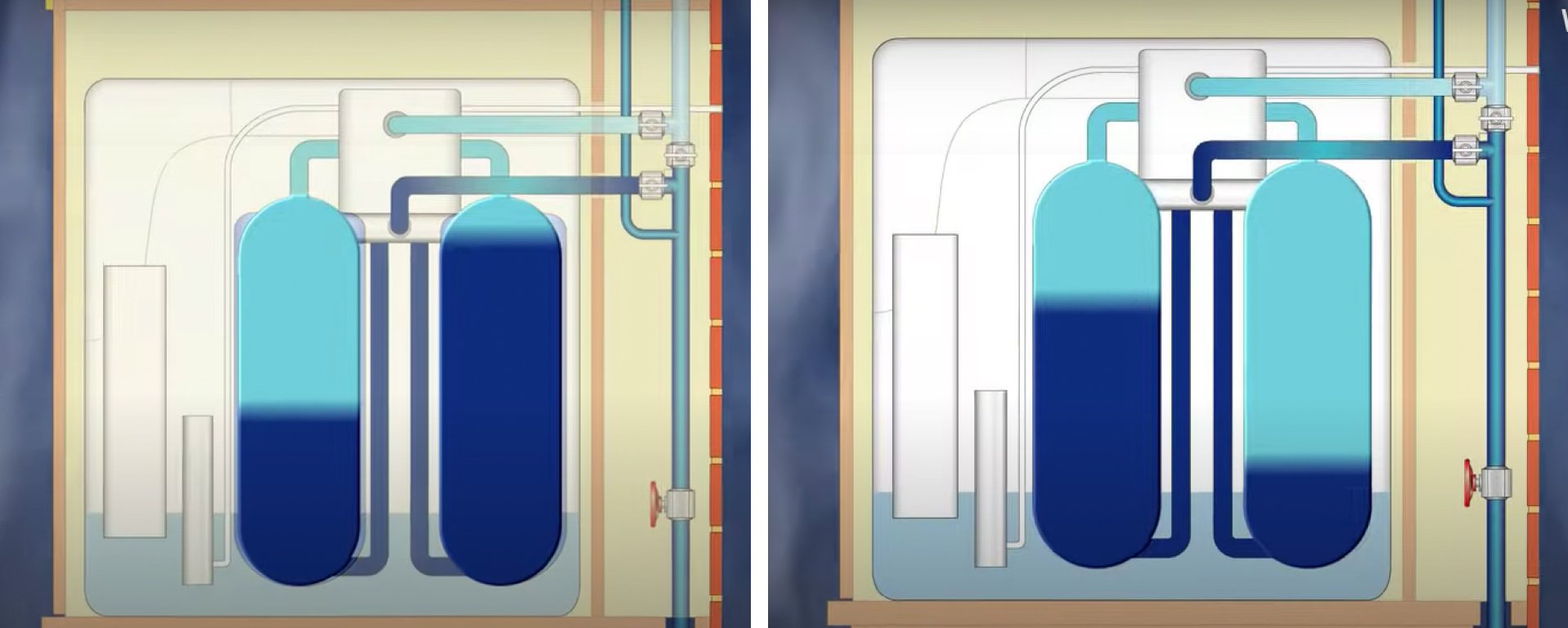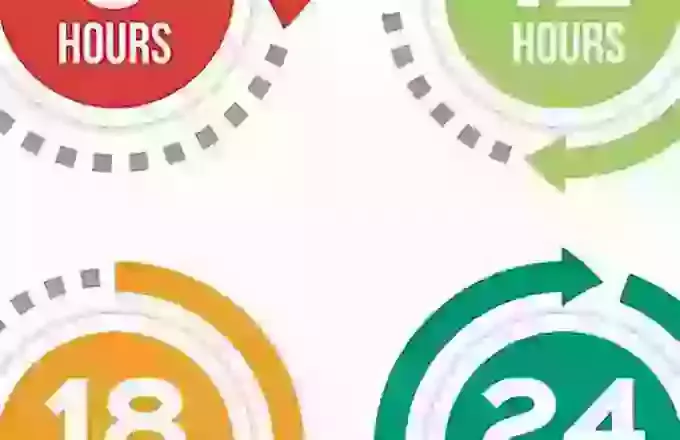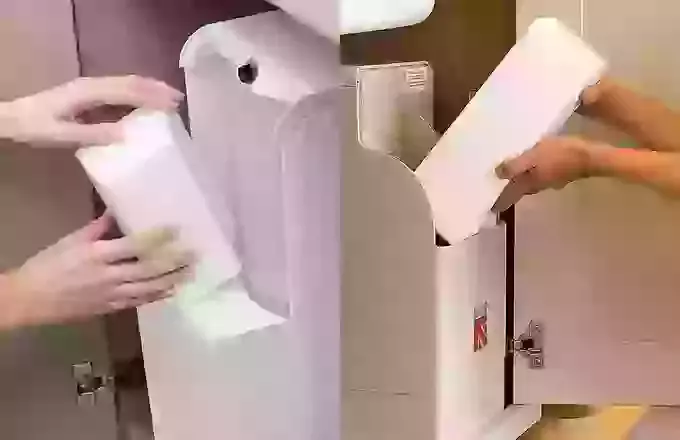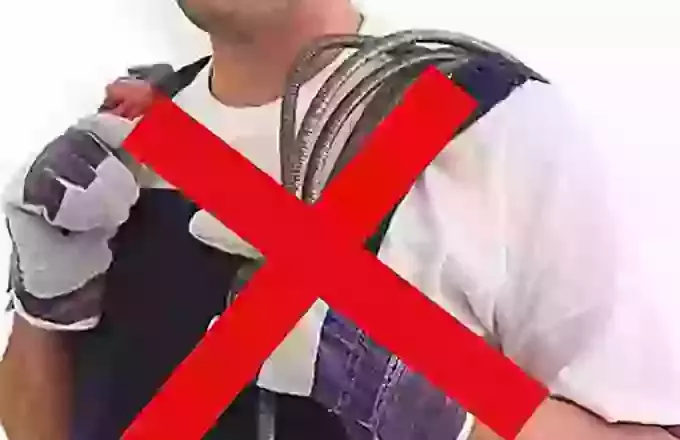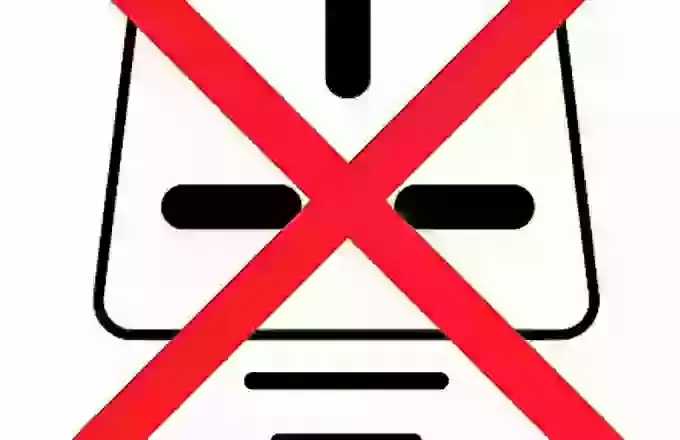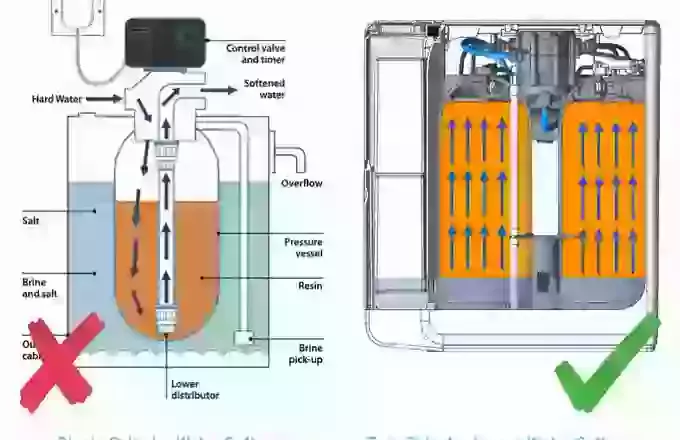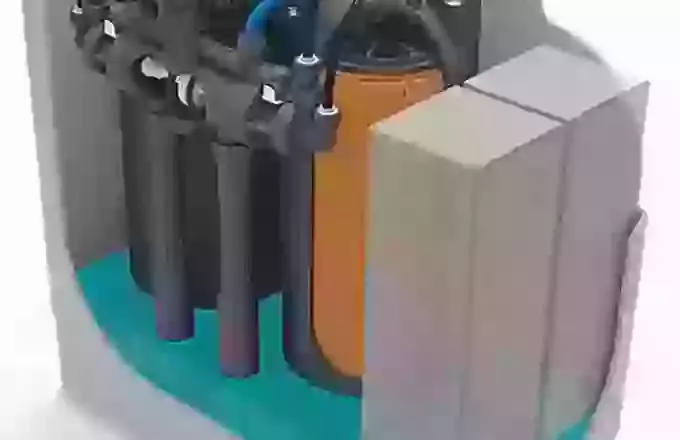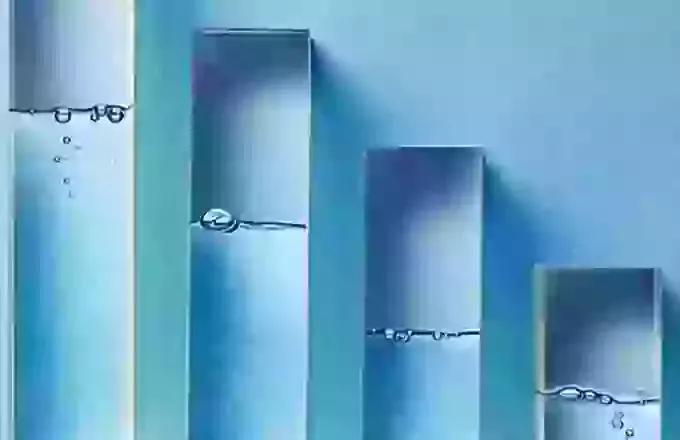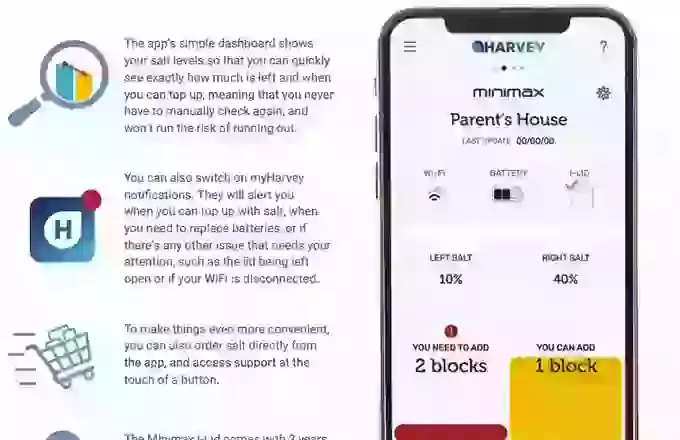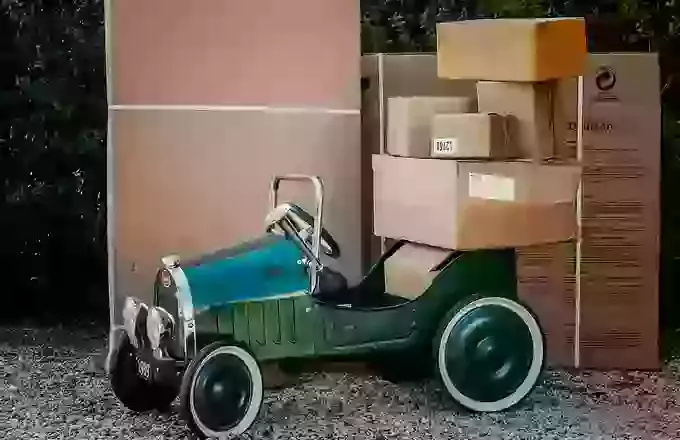How Does The Harvey Softener Work?
This is what your softener looks like
- Your softener consists of two resin cylinders.
These are filled with an ion exchange resin which softens the water by capturing the chalk.
When they are filled with chalk, they need to wash that chalk down the drain.
- This is done by washing a litre of brine water through the resin cylinders, pushing the captured chalk down the drain.
16.1L of fresh water is then flushed through the resin bed to remove any flavours and ensure that the water is safe and refreshing for drinking water.
The brine water (and salt) never goes near the drinking water supply.
- There is a shuttle valve that controls the flushing of one cylinder at a time, to ensure you have soft water 24/7.
- There are two very accurate meters that measure the water used in your home. These determine when the softener regenerates. They are the same type of water meter that the water authorities use, so they measure every drop of water through your home.
How your softener works
- Both cylinders work together.
- When one cylinder runs low on capacity (the ability to soften water), it pops offline to cleanse itself while the other cylinder continues to give you softened water.
- A typical regeneration can taken approximately 11 minutes depending on the local water pressure at the time, and will use 17.1L of water.
- The regeneration sound is really rather quiet, and is therefore not invasive in quiet spaces, and certainly shouldn't be a nuisance at nighttime when you are trying to sleep.
- When both resin cylinders are softening, the machine is silent and no water goes to drain.
What happens if you forget to add salt?
- If you forget to add salt, the softener will not be damaged, and will in fact continue to operate.
- However, the brine water will gradually be replaced by mains tap water. This water cannot flush chalk down the drain, and so soon after, your softener will stop softening the water.
- When you add salt again, this will dissolve, and when the softener next goes into regeneration, this will once again flush brine through your softener, and your softener will begin to give lovely softened water once again.
- However, to get completely soft water, both cylinders will need to be regenerated, which can take a day or two.
Why does it take time to produce softened water again?
The reason it takes time is:
- Firstly, when you add salt to the cabinet, the salt needs to dissolve in the water which will turn the water into brine. This happens quite quickly, perhaps a few hours.
- Secondly, the softener has to wait for the meters to next regenerate a cylinder before that brine water can flush the hard water out.
- This length of time is determined by a few factors: When the softener last regenerated, and how many litres of water remain to be used before the next regeneration.
If I remove the salt block, why does the water not go hard straight away
- If you remove the salt blocks, the softener will continue to give softened water until both cylinders have filled with chalk AND the Brine water is no longer a brine solution but rather just tap water.
- This can take a few days depending on how much water you are using, and when the softener last regenerated.
- Conversely, adding salt again can also take a few days to completely soften the water, although in most homes this can happen within 24 hours (those with combination boilers).
To summarise
- Your softener is without a doubt the best softener in the market.
- It will give you softened water all the time.
- There are no instructions for the softener, except for…







